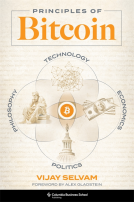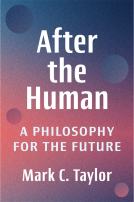
Space 2.0
How Private Spaceflight, a Resurgent NASA, and International Partners are Creating a New Space Age
by Rod Pyle
This title was previously available on NetGalley and is now archived.
Send NetGalley books directly to your Kindle or Kindle app
1
To read on a Kindle or Kindle app, please add kindle@netgalley.com as an approved email address to receive files in your Amazon account. Click here for step-by-step instructions.
2
Also find your Kindle email address within your Amazon account, and enter it here.
Pub Date Feb 26 2019 | Archive Date Mar 15 2019
Talking about this book? Use #Space20 #NetGalley. More hashtag tips!
Description
More than a half-century ago, humanity first hurled objects into space, and almost 50 years ago, astronauts first walked on the moon. Since then, we have explored Earth's orbit with shuttles, capsules, and space stations; sent robots to Mars, Venus, Mercury, Jupiter, Saturn, and Uranus; sampled a comet; sent telescopes into orbit; and charted most of our own planet.
What does the future hold?
In Space 2.0, space historian Rod Pyle, in collaboration with the National Space Society, will give you an inside look at the next few decades of spaceflight and long-term plans for exploration, utilization, and settlement.
No longer the exclusive domain of government entities such as NASA and other national agencies, space exploration is rapidly becoming privatized, with entrepreneurial startups building huge rocket boosters, satellites, rocket engines, asteroid probes, prospecting craft, and even commercial lunar cargo landers to open this new frontier. Research into ever more sophisticated propulsion and life support systems will soon enable the journey to Mars and destinations deeper in our solar system. As these technologies continue to move forward, there are virtually no limits to human spaceflight and robotic exploration.
While the world has waited since the Apollo lunar program for the next "giant leap," these critical innovations, most of which are within our grasp with today's technology, will change the way we live, both in space and on Earth. A new space age—and with it, a new age of peace and prosperity on Earth, and settlement beyond our planet—can be ours.
Speaking with key leaders of the latest space programs and innovations, Pyle shares the excitement and promise of this new era of exploration and economic development. From NASA and the Russian space agency Roscosmos, to emerging leaders in the private sector such as SpaceX, Blue Origin, Moon Express, Virgin Galactic, and many others, Space 2.0 examines the new partnerships that are revolutionizing spaceflight and changing the way we reach for the stars.
A Note From the Publisher
This book is only available in PDF format due to file size constraints.
Advance Praise
“For spaceflight fanatics like me, now—the dawn of the Second Age of Space Exploration—is the most exciting time to be alive since the moon missions of the late 1960s and early '70s . . . In Space 2.0, ace science writer Rod Pyle—an advisor to NASA and the National Space Society—provides an engaging and expertly-informed explanation of how we got this far, along with a factual yet inspiring intro to our around-the-corner new adventures in space. Strap yourself in tight. It's a fascinating ride!” —Geoffrey Notkin, member of the board of governors for the National Space Society and Emmy Award-winning host of Meteorite Men and STEM Journals
“Space 2.0 offers a grand overview of everything happening in space from JPL's robots to Elon Musk’s biggest ideas, and that is saying a lot! Pyle makes the complex technologies and intractable policy debates behind all this accessible to any reader without dumbing them down. It’s a great read for those who already excited about our new future in space and a must read for those who do not yet get it..” —Director of the University of Southern California’s Commercial Spaceflight Initiative and former NASA White House Liaison
“Space 2.0 is just the right book at just the right time . . . This is a must-read for anyone interested in the future of space exploration and development in the 21st century, and gives excellent suggestions about how you can get involved in Space 2.0.” —Daniel J. Rasky, PhD, chief of the Space Portal Office and senior scientist/engineer at the NASA Ames Research Center
“As Elon Musk celebrates more than 50 successful launches and a plethora of successful landings of his Falcon rockets and as Jeff Bezos achieves the ninth successful launch and landing of his New Shepard rocket, the space game is about to change. Rapidly. Your indispensable guide to the new space race is Rod Pyle's Space 2.0.” —Howard Bloom, author of The Lucifer Principle and Global Brain
Available Editions
| EDITION | Other Format |
| ISBN | 9781944648459 |
| PRICE | $21.95 (USD) |
| PAGES | 300 |
Links
Featured Reviews
Space 2.0 is an all-encompassing look at mankind’s race to space. The writing is accessible and includes everything you could want to know about rockets, space travel, and our future amidst the stars. It feels like a well-done textbook, accented with illustrations, historical photography, and artist renderings of imaginative futures.
The book covers a broad scope of topics, diving into every detail of past, present, and future space endeavors. We get a broad range of histories, including the history of space flight, the various space programs throughout the world, the creation of engines and space travel technologies, and the booming private sector. I was floored at how much has constantly been in the works since the beginning of our first space age. There’s no shortage of mysteries in space, and thousands of dedicated people continue to work tirelessly to get us into orbit and beyond.
I was most interested in the discussion of what we could do in space, and what it would take to make that achievable. Movies would have us think it’s as easy as hopping in a ship and turning on the engines, but we don’t see the decades of work it takes to create just one of the billion components in a spaceship. There’s so much to consider, and Space 2.0 dives into these many discussions. The book examines the effects of radiation on human space travelers, the effects of gravity on bone density, and the psychological aspects of long-term confinement within a ship, just to name a few.
If you’re fascinated by the history and science of space travel, Space 2.0 is the book for you. The author has taken great care to provide a thorough examination of mankind’s efforts, cementing this as an essential guide to what future generations will see as space exploration’s days of infancy.
Review will be published on 2/25/19: https://reviewsandrobots.com/2019/02/25/space-2-book-review













